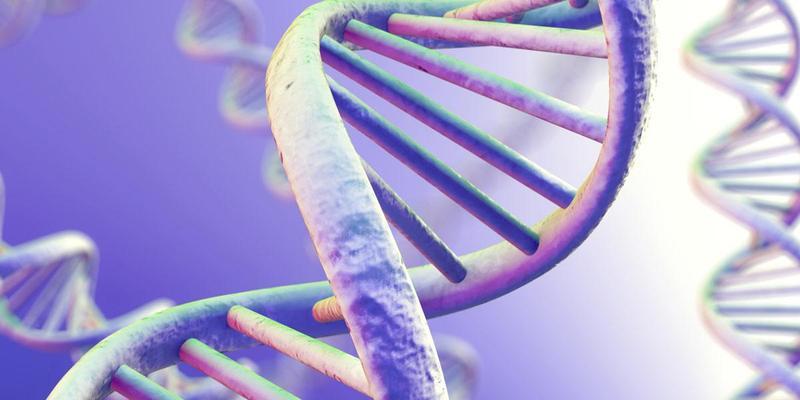Powerful 'Gene Drive' Can Quickly Change An Entire Species
Powerful 'Gene Drive' Can Quickly Change An Entire Species
Biologist Ethan Bier runs a laboratory at the University of California, San Diego where fruit flies are used to help unravel the processes that lead to some human diseases. One day recently, a graduate student in the lab called him over to take a look at the results of the latest experiment.
Bier was stunned by what he saw. “It was one of the most astounding days in my personal scientific career,” Bier says. “When he first showed me, I could not believe it.”
His student, Valentino Gantz, had found a way to get brown fruit flies to produce blond-looking offspring most of the time.
“When the next generation came out and almost all the kids were blond,” Bier says, everyone in the lab was “jumping up and down.”
Turning fruit flies from brown to yellow might not sound like a major achievement. But it was. It showed that scientists had a very fast and easy way to permanently change an entire species.
“I believe it’s going to transform the world of genetics,” Bier says, “because it’s going to allow researchers to bypass the rules of genetics in many different spheres of activity.”
Scientists have known for years how to genetically engineer many living things. Sometimes, the genetic changes are passed down to offspring.
What Gantz demonstrated was a new technique that could make that happen almost every time. Scientists call it a “ gene drive.”
The drive is a sequence of DNA that can cause a mutation to be inherited by the offspring of an organism with nearly 100 percent efficiency, regardless of whether it’s beneficial for that organism’s survival.
By combining it with new genetic editing techniques, scientists are able to drive changes they make quickly through an entire species.
“The gene drive immediately makes the organisms that carry it have the characteristic, and then secondly it causes them to have all their children have the same characteristic,” Bier says.
The advance is raising excitement about possible real-world uses, such as fighting diseases like malaria by changing mosquitoes that spread malaria so that they can no longer carry the parasite. The technology might also help with other insect-borne diseases such as West Nile, dengue fever and Lyme disease.
But the approach is also raising serious concerns.
The major issue is uncertainty about what would happen if scientists start to release these genetically engineered creatures from their labs.
“There are inherent problems with gene drives,” says Brendan Parent, a bioethicist at New York University. “We don’t know what other impacts we’re having.”
The engineered organisms could upset the delicate balance of an ecosystem, inadvertently destroying other species, causing new diseases to emerge or prompting existing illnesses to spread to new places, Parent says.
“We don’t know whether the elimination of malaria specifically won’t somehow have genetic effects that cause a super-virulent pathogen to be released or to bring in much greater catastrophic consequences,” Parent says.
Some worry that the technology could end up in the hands of terrorists.
“If any group or country wanted to develop germ warfare agents, they could use techniques like this,” says Stuart Newman, a cell biologist at the New York Medical College. “It would be quite straightforward to make new pathogens this way.”
Scientists have known about gene drives for many years. But they never had a good way to use them.
“All of this changed two years ago when several groups, including one that I worked with, developed CRISPR,” says Kevin Esvelt, an evolutionary engineer who works on gene drives at Harvard.
The technique called CRISPR/Cas9 makes it much easier to edit DNA.
Scientists were able to combine precise CRISPR edits with a gene drive to make the changes stick.
Esvelt and other scientists working with gene drives dismiss concerns that the technology might be used by terrorists. They argue that terrorists have much easier ways to attack. But they acknowledge that the technology is so potent that scientists have to proceed very carefully.
“There are profound ethical issues here,” Esvelt says. “That’s why we need to handle this differently from the way that we traditionally handle scientific advances,” he says.
Esvelt, Bier and other scientists working with gene drives say they are taking extra precautions to make sure none of their engineered insects or microbes escape by accident. They are also working on ways to program any living things changed this way with molecular switches they could turn off if something bad does happen.
“What that means is if someone makes a mistake, then we can undo that change,” Esvelt says.
They argue that the potential benefits from gene drives are so great that it’s important to find safe ways to use the technique.
Besides fighting human diseases, scientists also are exploring the use of gene drives to stop bugs from eating crops, which could enable farmers to use less pesticide. Bacteria that are genetically engineered this way could be used for many things, including cleaning up oil spills.
“It is potentially a way for us to interact with nature in a whole new way — using biology rather than bulldozers and toxic pesticides,” Esvelt says.
Anil K Seth/Aeon
Be the first to post a message!
